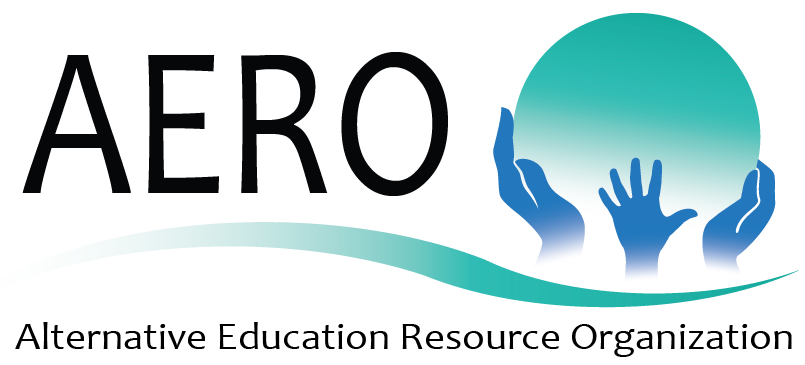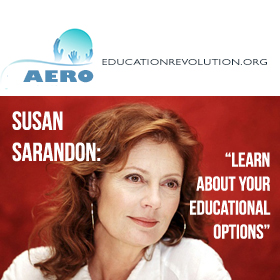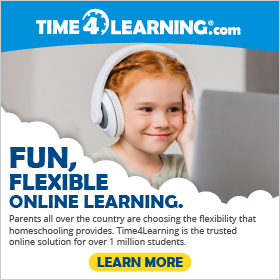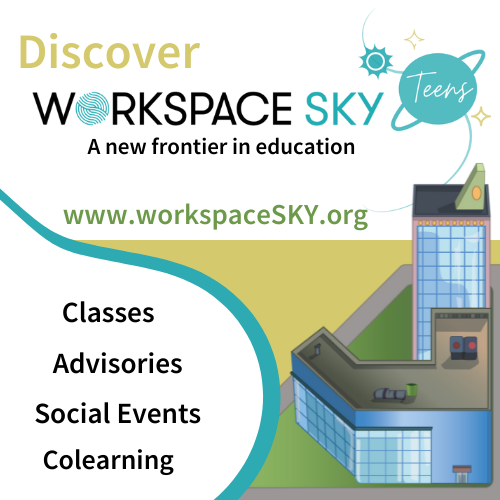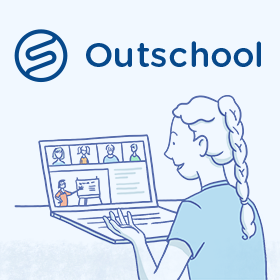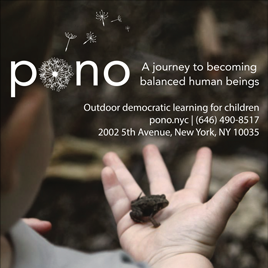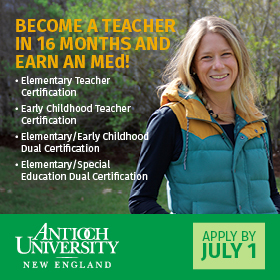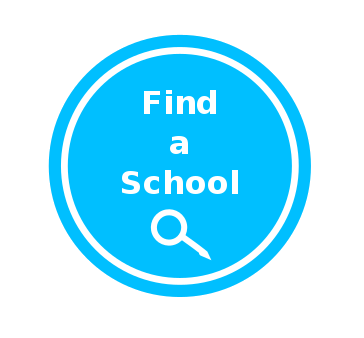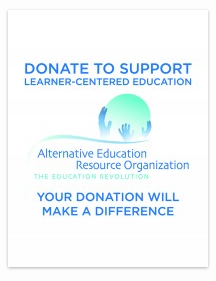by Ron Miller
What type of learning environment is right for your child? Choosing a school, or choosing to educate your child outside the institution of schooling, is an important decision — and today, with many educational choices available to families, a complicated one. There are significant differences among the diverse teaching and learning approaches that often get lumped together as “alternative education.”
One directory published in 1997, The Parents’ Guide to Alternatives in Education, by Ronald E. Koetzsch, described over twenty distinct types of alternative schools and six innovative “trends” in public education. The differences among them reflect diverse moral and philosophical orientations: Some aim to maximize freedom in learning; others provide what they consider to be a child-nurturing structure of one sort or another. Some are rooted in specific religious or cultural understandings; others, in ideals of social justice or ecological wisdom. As a parent with no training in educational philosophy, you might find it confusing to try to figure out which approach would best address the needs of your child and the values of your family.
In sorting through these diverse approaches, I have found it useful to place them into several broad categories, and, using these categories, I created a conceptual map that I have presented in workshops and courses. This map enables us to compare apples to oranges, so to speak. It can help answer numerous basic questions: What makes a Waldorf school different from a progressive school? In what ways does “unschooling” work well for some children but not as well for others? How much adult authority is appropriate or necessary to allow children to achieve specific learning goals?
With this map, we can take the twenty or thirty different educational orientations and group them into six basic clusters: the transmission model, freedom-based learning, social constructivism, critical pedagogy, spiritual developmentalism, and integral or holistic education. A particular school or learning situation might contain elements from two or more of these groups, making it difficult for us to classify perfectly, but the map still helps us understand the issues and variables that we need to consider when we compare and evaluate educational approaches.
Transmission model
This term refers to conventional educational thinking — to the dominant, mainstream approach to which educational alternatives are alternative. What defines mainstream education is its view of the learning process: Knowledge is seen as an established, objective, authoritative body of facts outside the learner’s experiences or personal preferences, and the role of the educator is to transmit this knowledge, along with accompanying academic skills and attitudes, to the learner’s mind.
The transmission model denotes a one-way, largely authoritarian process. The educator is in charge and holds the authority to evaluate learning according to how well learners meet his or her expectations. According to a transmission understanding of education, instruction is “delivered” and classrooms are “managed” as efficiently as possible. In public schools, the educator is backed by an entire system of demands, inducements, punishments, measuring devices, and packaging of knowledge: testing, grades, standards, curriculum units, textbooks, psychological and medical labels, detention slips, and much, much more.
Many critics have complained about this model’s narrow vision of the learning process and its effects on students’ motivation and sense of self. Philosopher John Dewey, for example, argued that a transmission model of education is more appropriate to an authoritarian, controlled society than to the democratic and open society we claim to want in the U.S. Yet, in many educational situations, some degree of transmission is appropriate and even necessary. Professional and technical training requires novices to learn established bodies of knowledge if they are to master their trades.
Closely knit cultural or religious groups do need to transmit their heritage if they are to maintain their traditions. Even in most alternative educational approaches, there is some transmission of more or less objective knowledge about the world. One key question that alternative educators and parents need to address is just how much, and in what specific ways, their students’ learning experiences should be determined by external factors. What cultural, social, political, religious, or intellectual values, if any, might be important enough to impose on the individual learner, regardless of the educational approach being chosen?
Freedom-based learning
Some proponents of educational alternatives have insisted that the learner’s freedom and autonomy should be limited as little as possible, even not at all. They believe that learning always starts with the individual’s needs, goals, and desires, and not with any supposed body of knowledge or societal demands. For these alternative educators, the ideal education embraces the exact opposite of transmission: It centers on a learner’s entirely self-motivated exploration of whatever the world has to offer that seems relevant to the learner’s own life. This full-bodied individualism has a long and colorful history in education.
Leo Tolstoy, Francisco Ferrer, and other radical critics of the modern state, for example, developed an anarchist theory of education in the late nineteenth century that led to the founding of a vibrant “modern school” movement in the years before World War One. A. S. Neill built his freedom based Summerhill School a few years later on the basis of a psychological, rather than explicitly political, interest in freedom. In the 1960s, the rise of student activism and a radical counterculture created a surge of interest in both the psychological and political aspects of freedom, resulting in a “free school” movement that at its peak included nearly a thousand schools across the U.S. Neill’s book Summerhill was a best seller, and other articulate critics of mainstream schooling, including Paul Goodman, George Dennison, Ivan Illich, and John Holt, also wrote boldly and passionately about freedom in learning.
Holt’s insistence that genuine learning is generated from the person’s own experience led him to question the existence of all school environments, even the free schools, as being artificially separated from the real world; eventually, he became a pioneering advocate of unstructured family-based learning, which he called “unschooling.” For years, many homeschooling families have considered Holt to be the founder of the modern-day homeschooling movement and have seen his book Teach Your Own, first published in 1981, as the “bible” of homeschooling.
Another example of freedom-oriented education, becoming quite popular today, is the Sudbury model, which originated at the Sudbury Valley School in Massachusetts in the 1960s. The developers and advocates of this approach refer to their pedagogy as “democratic” education. They argue that the freedom their students enjoy is no different from the liberty guaranteed to citizens in a true democratic society, and indeed, prepares young people effectively for a life of active citizenship in a democracy.
Social constructivist models
In contrast to the individualism often reflected in theories of freedom-based learning, many educators argue that learning is a social endeavor, requiring meaningful interaction between and among persons within an environment that deliberately encourages collaboration, inquiry, and creative problem solving. For educators holding this view, knowledge is neither entirely objective (out in the world) nor entirely subjective (relevant only to the individual’s interests); rather, it is dynamically constructed through the relationship between and among persons and their social and physical environment.
This understanding embraces ideas that John Dewey and his followers, and developmental psychologists such as Jean Piaget and Lev Vygotsky, expressed early in the twentieth century and has since been developed further by numerous other theorists and educators, for example those who practice approaches such as “cooperative learning” and “whole language” instruction.
The broad term “progressive education” often refers to schools or teaching methods based in this tradition (though it also means other things). Although these ideas have influenced many alternative educators and independent schools, they are also commonly practiced by progressive public school educators. Perhaps the most complete and explicit example of this orientation is the model of early childhood education developed in the city of Reggio Emilia, Italy. The Reggio schools have inspired thousands of educators around the world with their emphasis on young children’s innate creative abilities and the importance of developing a collaborative and supportive learning community. These schools encourage children to engage in extensive projects that reflect their interests, and the teachers help them to work together and find meaning in their activities.
Social constructivism has often been called “child-centered” education because it strives to be “developmentally appropriate” (that is, it respects human capacities and tendencies as these naturally unfold during a child’s life) and engages students so fully in their learning; it is clearly an alternative to the transmission model. Its emphasis on community and collaboration also gives it a social dimension that often extends to a larger concern for social justice and participatory democracy, although constructivist educators might be cautious about explicitly politicizing their teaching.
Usually constructivism is expressed in secular language and non-religious contexts (such as public schools), but it can be congruent with religious educational approaches, too; to give one important example, it is practiced in many of the Friends (Quaker) schools, where learning often takes place through projects, discussions, and social action in the context of a caring school community.
Critical pedagogy
Dewey explicitly argued that progressive education should not be entirely “child-centered” but needed to address social problems in the child’s world. Many of Dewey’s more overtly political followers have therefore emphasized the importance of “social reconstruction” or “social responsibility” as primary goals of education. In the 1970s, after the publication of Pedagogy of the Oppressed by the radical Brazilian educator Paulo Freire, the term “critical pedagogy” came into use and many progressive theorists now use it to mean a deliberate effort to educate for social responsibility.
They believe that the main purpose of education is not to transmit knowledge and preserve social traditions but to transform society by helping students develop a perceptive and inquisitive consciousness of the conditions of their culture. This literature speaks about freedom and liberation, but it is important to note that these educators do not hold an individualistic view of freedom. They are concerned with changing cultural, economic, and political institutions and believe that a functioning democracy requires purposeful collective action, not simply personal choice.
Proponents of critical pedagogy tend to be strong supporters of the public school ideal (though they certainly want to change the actual conditions in most schools) and generally view privatization of education as being elitist or a retreat from social responsibility. So homeschoolers and independent alternative educators generally do not find many enthusiastic allies among this group. Yet critical pedagogy represents an important segment of the alternative education map, for it raises basic questions about the very purpose of education.
In a world suffering from excessive violence and exploitation, racism and class division, and the devastating effects of globalization and corporate expansion, teachers and parents simply cannot afford to treat knowledge and academic skills from a morally neutral, disengaged perspective, as they often do. In the context of an unequal and often unfair society, say the advocates of critical pedagogy, students’ personal interests and desires cannot be the only measure of educational value. In a democracy, if we want to educate young people to become active, engaged citizens, can we truly do so by “getting out of their way,” as some of the freedom-based educators explicitly say, or is it necessary to provoke their learning deliberately, following a clear moral and ethical vision?
According to critical pedagogy theory, these are essential issues for every educator to ponder. Even “alternative” educators need to consider whether their approach is overly “child-centered” in a troubled world, because, they assert, being neutral or indifferent to the moral condition of the world into which we are educating children ultimately amounts to an endorsement of the transmission model; it is to say, in effect, that learning is an objective process and that the purpose of education is to transmit “knowledge” into young minds, even if the form of transmission doesn’t look as harsh or artificial as it does in conventional schooling.
Spiritual developmentalism
This is a bit of an unwieldy label, but it is the most precise one I have found. It encompasses educational models based on very specific ideas about the unfolding of the human soul through specific stages of development.  Both terms in the description are essential: The educators who practice these models insist that there is a spiritual dimension to human existence — i.e., the soul is nourished by universal creative energies that are not explained by the laws of physical science or conventional psychology or learning theory. And the models carefully prescribe what sorts of teaching and learning experiences are appropriate and beneficial at each level of development.
Both terms in the description are essential: The educators who practice these models insist that there is a spiritual dimension to human existence — i.e., the soul is nourished by universal creative energies that are not explained by the laws of physical science or conventional psychology or learning theory. And the models carefully prescribe what sorts of teaching and learning experiences are appropriate and beneficial at each level of development.
The two best known examples of this educational approach are Montessori and Waldorf education, which are firmly rooted in observations and beliefs about developmental cycles. In addition to Maria Montessori and Rudolf Steiner (founder of Waldorf education), other spiritual teachers, notably the yogi/mystic Aurobindo and the Sufi master Hazrat Inayat Khan, have proposed educational models corresponding to stages of the soul’s unfolding. According to educational scholar David Marshak, who has studied these four approaches extensively, although the models come from very different cultures and traditions and differ in many details, they view the development of human capacities in remarkably similar ways. So whatever we might think of these specific educational practices, there does appear to be some archetypal reality underlying them.
These types of educational alternatives are “child-centered” in a paradoxical way. The learning environment is generally highly structured, with the teacher having a very active and authoritative role. These are not free schools! Yet the structure provided is intended to meet the authentic (if often unconscious) developmental needs of the growing child. Unlike transmission education, education grounded in spiritual developmentalism does not invoke authority for the sake of authority; rather, it intends to establish a structure meant to support the unfolding of each child’s latent potentials. In contrast to freedom-based and even social constructionist approaches, this educational model asserts that a specially trained, self-disciplined, and caring teacher can know a student’s true potentials better than the student knows them him or herself — because an immature young person is still gaining the capacity to know and understand deeply.
Integral or holistic education
The final corner of my proposed map comprises not only a separate category of its own, but also an integrative category in which we find all of the other parts as well. This orientation has been developed only fairly recently. In the past fifteen or twenty years, a small number of philosophers and educational theorists have been exploring what they variously call an “integral,” “ecological,” or “holistic” worldview.
Essentially, they are trying to describe the interconnected nature of the world and human experience; in this view, all things need to be seen in their wholeness rather than in fragmented and detached ways. Every object, idea, or living being is both whole in itself and part of an endless series of larger wholes that give meaning to it: Each successive whole is greater than the mere sum of its parts. This perspective has been described at length in the writings of Ken Wilber, and is also found in thinkers such as David Bohm, Alfred North Whitehead, Fritjof Capra, Anna Lemkow, Ervin Laszlo, Gregory Bateson, David Ray Griffin, and Buckminster Fuller, among others. It also reflects the principles of many religious and mystical traditions. In education, a similar understanding was expressed in the writings of the well known teacher Krishnamurti (see, e.g., Education and the Significance of Life), who also founded several schools. By the early 1980s, the concept of “holistic education” began to take shape as a recognizable field of study and practice.
A holistic educator recognizes that all five of the other orientations on the educational map have value: They all have something important to say about the nature of the human being and the process of learning. From a holistic perspective, however, each one of them contains only a partial truth, because human existence and the world of which we are a part are so enormously complex and dynamic that they cannot be fully grasped by any one ideology. A holistic educator attempts to balance freedom and structure, individuality and social responsibility, spiritual wisdom and spontaneity, in order to respond to each learning situation in its immediate presence. Any particular learner, in a particular setting, in a particular culture, at a particular point in historical time, should be addressed in that moment, and not according to a fixed model meant to apply to all individuals in all learning situations.
There are educators, in both public schools and alternative settings, who practice in this way even if they do not label themselves “holistic” or “integral.” For example, a teacher development program called The Courage to Teach, based on the inspiring work of Quaker educator/author Parker Palmer, encourages educators to teach from their hearts, from their whole selves, to be wholly present in their relationships to students and colleagues. Many other educators bring into their classrooms their spiritual practices, their commitment to social justice and healing, and their profound respect for young people. These teachers transcend the boundaries of the models I have described, integrating into their work the wisdom to be found in each. These are holistic educators.
Although many alternative (and some public) schools have many holistic qualities, few schools are fully, explicitly committed to practicing an integral or holistic philosophy of education.
Recently, I have been learning about interesting educational movements growing out of spiritual traditions from India. One of them, called “neo-humanist” education, is being developed by the international Ananda Marga organization, whose work is grounded in the teachings of a philosopher named P.R. Sarkar.
Another approach, called KPM, has been developed by the Atma Vidya Educational Foundation. Still another integral approach can be found at The Robert Muller School, in Texas; named after a former United Nations official and global peace activist who developed a “world core curriculum,” this school is often cited as a model for holistic education. There are others scattered about that would consider themselves to be “holistic” schools, as well, and certainly there are many homeschooling families who live and teach according to the principles of an integral worldview. The main point to keep in mind is that holistic education is not a specifiable model or ideology, but an attitude or orientation of openness to the living presence of our children/students and to the complex and dynamic world around us.
The map is not the territory. If I am to be faithful to my own holistic principles, I must acknowledge the limitations of the conceptual map I have just laid out. The actual beliefs and practices of any individual parent, teacher, or school are too alive, too real, to be pinned down by such concepts and labels. It is not the purpose of this map to stick people into rigid categories so we can make confident assumptions about what they do or believe.
Rather, the map offers a way of sorting out different belief systems so we can examine these assumptions (our own and others’) and appreciate both their strengths and flaws. We can each place ourselves on the map and ask ourselves why we seem to fit better in some places than in others. Then, we need to ask ourselves: Are we satisfied to remain in these places, or do other perspectives challenge us with their own partial understandings of the wholeness of education? Once we find where we are most comfortable, then we can choose, more wisely and meaningfully, those educational approaches that resonate most closely with our own experiences, beliefs, and values—and also respect those of our fellow educational travelers who make other choices.
This article was originally published in Paths of Learning #20 (Spring, 2004).
